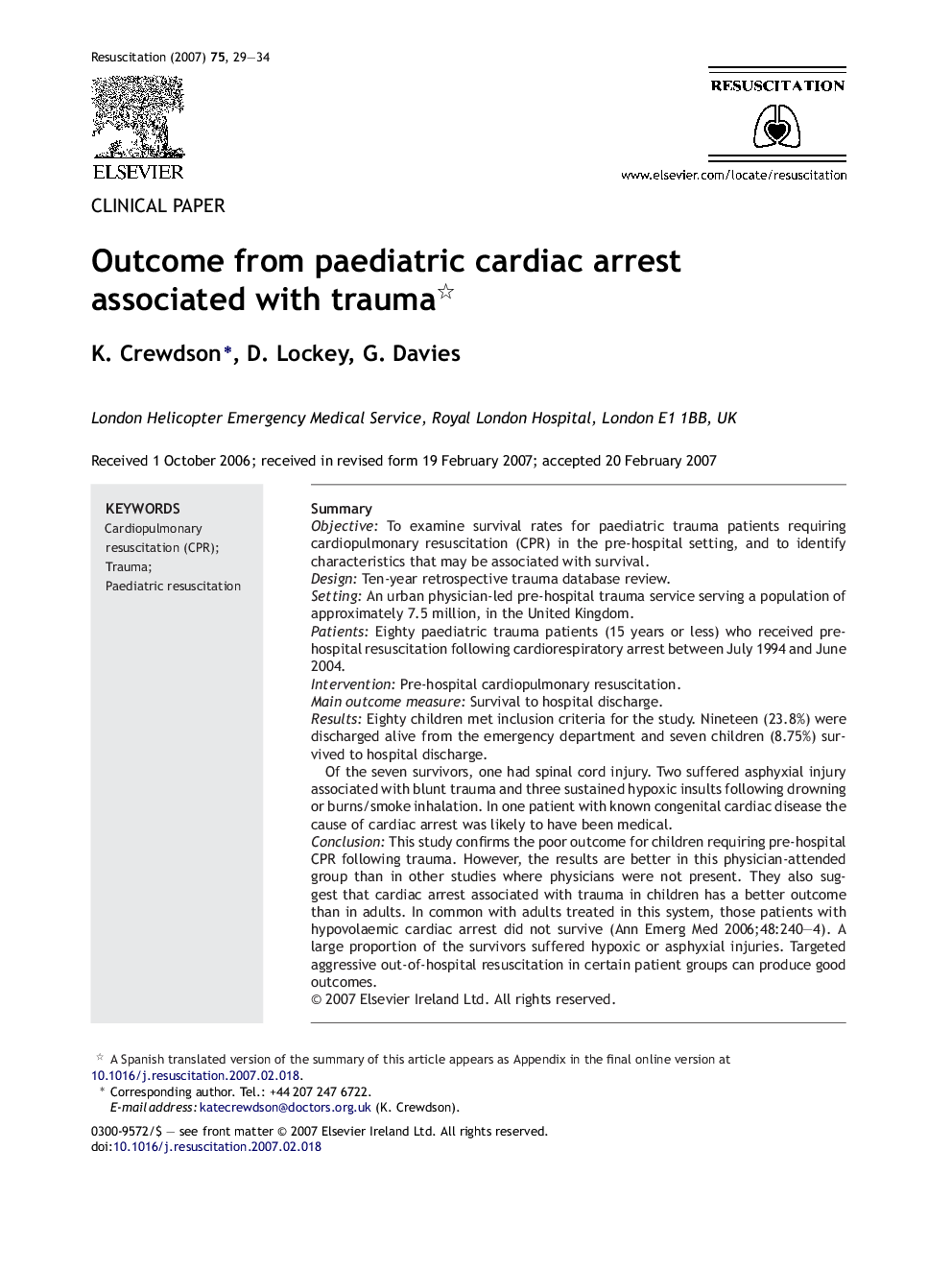| Article ID | Journal | Published Year | Pages | File Type |
|---|---|---|---|---|
| 3010761 | Resuscitation | 2007 | 6 Pages |
SummaryObjectiveTo examine survival rates for paediatric trauma patients requiring cardiopulmonary resuscitation (CPR) in the pre-hospital setting, and to identify characteristics that may be associated with survival.DesignTen-year retrospective trauma database review.SettingAn urban physician-led pre-hospital trauma service serving a population of approximately 7.5 million, in the United Kingdom.PatientsEighty paediatric trauma patients (15 years or less) who received pre-hospital resuscitation following cardiorespiratory arrest between July 1994 and June 2004.InterventionPre-hospital cardiopulmonary resuscitation.Main outcome measureSurvival to hospital discharge.ResultsEighty children met inclusion criteria for the study. Nineteen (23.8%) were discharged alive from the emergency department and seven children (8.75%) survived to hospital discharge.Of the seven survivors, one had spinal cord injury. Two suffered asphyxial injury associated with blunt trauma and three sustained hypoxic insults following drowning or burns/smoke inhalation. In one patient with known congenital cardiac disease the cause of cardiac arrest was likely to have been medical.ConclusionThis study confirms the poor outcome for children requiring pre-hospital CPR following trauma. However, the results are better in this physician-attended group than in other studies where physicians were not present. They also suggest that cardiac arrest associated with trauma in children has a better outcome than in adults. In common with adults treated in this system, those patients with hypovolaemic cardiac arrest did not survive (Ann Emerg Med 2006;48:240–4). A large proportion of the survivors suffered hypoxic or asphyxial injuries. Targeted aggressive out-of-hospital resuscitation in certain patient groups can produce good outcomes.
